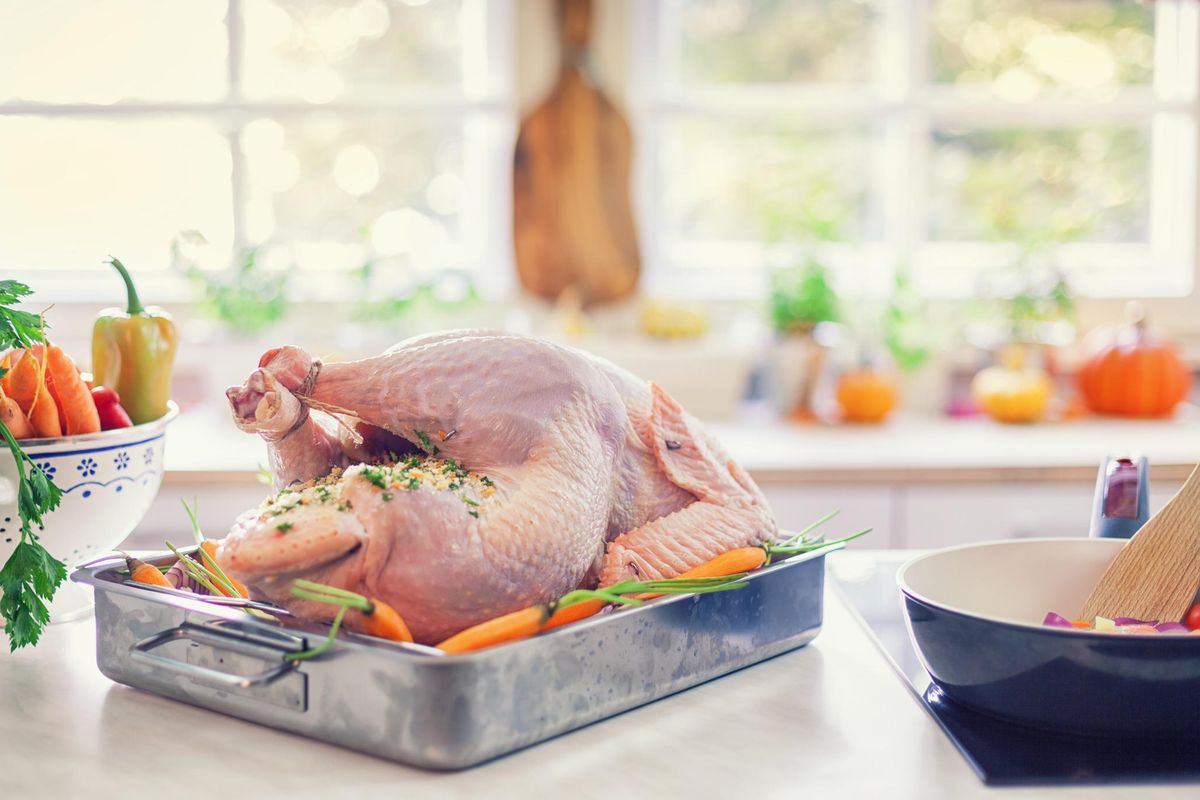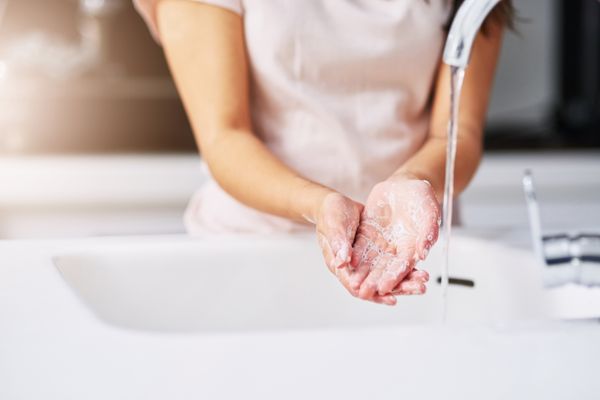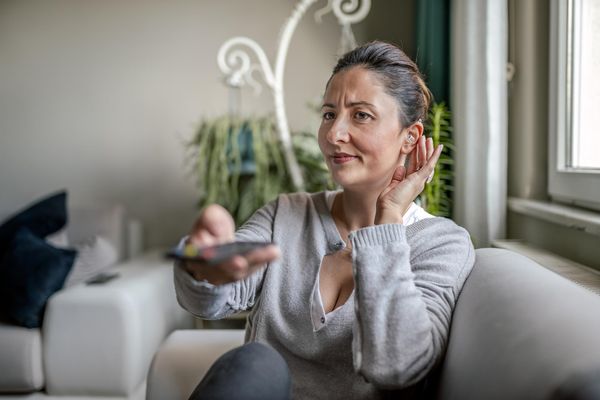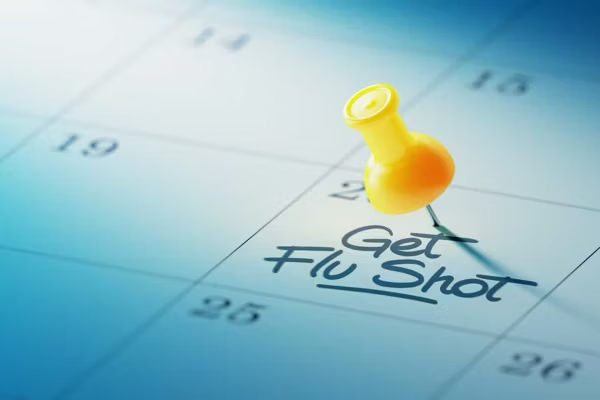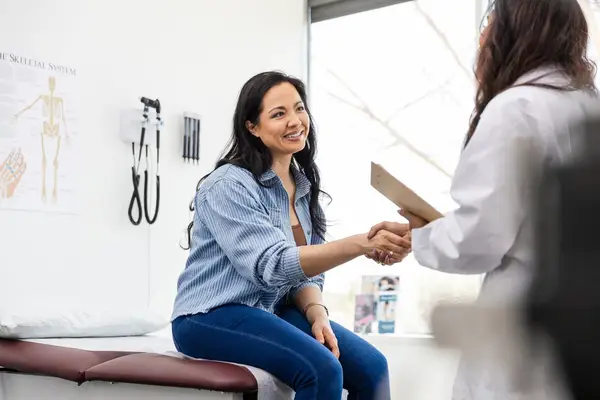This story was originally published by ProPublica.
By Karim Doumar, ProPublica
ProPublica is a Pulitzer Prize-winning investigative newsroom. Sign up for The Big Story newsletter to receive stories like this one in your inbox.
Series: Unchecked
America's Broken Food Safety System
Thanksgiving is just a few days away, and I regret to inform you that there's a multidrug-resistant salmonella outbreak running rampant in the nation's poultry industry.
I know that's daunting, but something to be thankful for this year is the ProPublica reporters who spent the past several months uncovering that the outbreak never abated and looking into how fragmented food safety rules left the U.S. Department of Agriculture, the Centers for Disease Control and Prevention and the Food and Drug Administration ill-equipped to stop it. I know I am.
I don't bring up salmonella to scare you (most of the ProPublica reporters who ate poultry before working on this story still eat poultry) but to prepare you. While the food regulatory system has failed to stop the rise of infantis, a salmonella strain that doctors find difficult to treat, there are a lot of steps you can take to protect yourself.
For what it's worth, salmonella tends to be found way more frequently in chicken than whole turkey, and the tips below apply to both birds (as well as just about any other) you wish to eat.
Check Your Turkey Using ProPublica's Chicken Checker.
Your turkey's packaging should come with a P-number. Usually, it's found on the USDA's mark of inspection or printed near a use-by date, inspection stamp or price tag. ProPublica created a searchable database that shows the salmonella records of the nation's poultry plants. Enter in the P-number on your package, and you can see the salmonella rate where the poultry came from.
If you find your bird came from a place with instances of high-risk salmonella, that doesn't mean you ought to throw it away. It just means you should be extra careful when you prepare it.
As a side note, we are not finished reporting on salmonella in poultry. If you'd like to help, please fill out the form below the Chicken Checker to share your bird's P-number and where you bought it. That'll help our reporting on the poultry supply chain.
Do Not Rinse Your Turkey.
We see this all the time. You unwrap your turkey and put the whole thing under water. I get it. Poultry is slimy, and your elders taught you to do this. But if there's salmonella on your turkey, rinsing is a great way to splash the bacteria onto other surfaces in your kitchen, where you'll least expect it, the USDA says. That's called cross-contamination. Eliminating it, you'll find, is a theme here.
Britanny Saunier, executive director of the Partnership for Food Safety Education, told me that rinsing poultry is a habit that has been passed down from a time when the birds came from your own yard or a local farm and cleaning literal dirt off them was in order. There's no need to rinse a processed bird, though.
Wash Your Hands Again and Again and Again (With Soap)!
Remember how in March 2020 everyone was relearning how to wash their hands for the full CDC-recommended 20 seconds and nervously joking about how touching your face will kill you? Now carry that spirit into the holiday. Before you start cooking, wash your hands. Then wash them again, maybe after every step. Most importantly, you should always wash your hands in between touching raw meat and anything else in your kitchen.
Some people prefer to get gloves. I find that to be annoying because you have to keep taking them on and off to prevent cross-contamination. But whatever keeps you most vigilant and your kitchen cleanest is the way to go.
Actually, Just Wash Everything (With Soap)!!
Salmonella bacteria are resilient little germs. They can survive hours to days on surfaces and cannot be killed by drying or freezing, according to the FDA. If you touch raw turkey, wash your hands immediately after. But let's say you forget and go get something out of your fridge. It's probably worth disinfecting the fridge handle now. And the faucet you used to wash your hands. Did you prep your turkey on the counter? Clean that. Use a cutting board? Clean that, too. Check a recipe on your phone? You get the idea.
Keep Your Raw Turkey Separate From Everything Else.
Don't use the same cutting boards for preparing raw turkey and vegetables without a thorough cleaning in between. As much as possible, minimize the surfaces and other food that raw poultry comes into contact with. Don't, for example, put cooked meats on the same plate they sat on raw.
Get a Meat Thermometer (or Several).
Salmonella — even the most dangerous strains — perishes at 165 degrees Fahrenheit, and a meat thermometer is the only surefire way to tell if your poultry has reached that temperature. The USDA recommends putting the device in the deepest part of the breast, the innermost part of the thigh and the innermost part of the wing. White meat cooks faster than dark, so those three parts will all hit 165 degrees at different times during the cooking process, but they all do need to reach 165 before you should eat your bird.
Some people like their turkeys cooked hotter than 165 (especially the breasts, which are tougher). That's a personal call. ProPublica doesn't care how hot your bird is, as long as every millimeter of it is hotter than 165.
(ProPublica data reporter Irena Hwang also really wants me to remind you about the amazing power of letting your meat rest after you've finished cooking it. Just not for too long.)
There's really no good way to eyeball whether your turkey is cooked well enough to have killed the salmonella. Just get the thermometer; you can even bring one as a gift for whoever's hosting you.
Be Very Careful With Stuffing and Marinades.
Stuffing can have its own salmonella from ingredients like raw eggs, and it can get contaminated from the bird itself if you stuff it. It also can cause your turkey to cook unevenly. It's safer and easier to cook your stuffing separately. If you insist on having your stuffing cook inside your bird, make sure to use your meat thermometer to check its temperature, too — again, 165 is the salmonella-killing temperature — and follow the USDA's advice on preparing it.
Marinating, brining and basting your bird are all great strategies for getting the most flavor out of your poultry. The USDA says that a turkey can marinate for up to two days in the fridge before becoming unsafe to eat. Please do not reuse your marinade for anything unless you boil it first. It's been hanging out with raw turkey for hours.
Making sure there's no cross-contamination in your kitchen and cooking your turkey through to at least 165 degrees is a good way to avoid any Thanksgiving salmonella mishaps, so you can focus on the important things like whether the turkey tastes good, fighting with your family (if that's your thing), parades and football.

